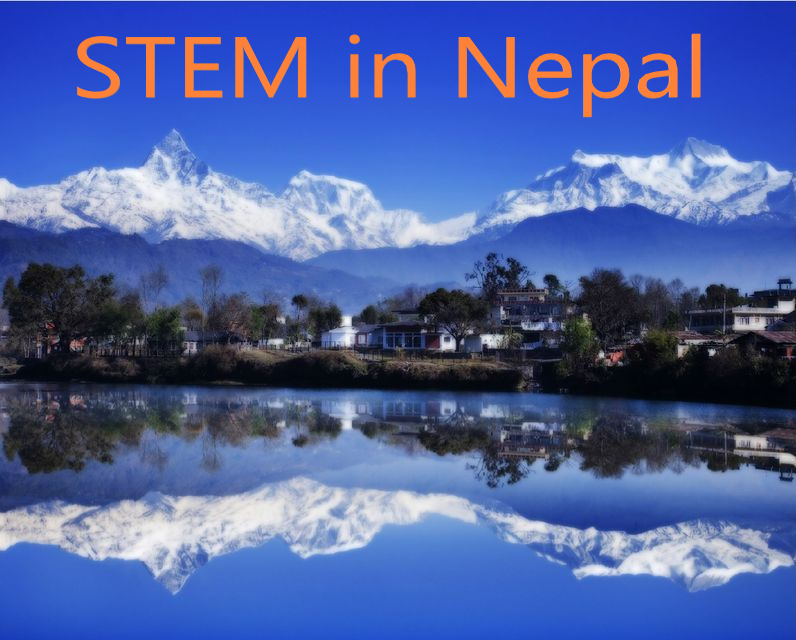Educator Development
Title: 2017-10-28 Carthage-Yerkes Electrostatics in Space
Authors: Frances Duletri, Lynne Zielinski, Bonnie Thurber
Subjects: Teacher Workshop
Standards:
Short Description:
Space is not empty, but full of plasma and particles that you never expected to be there. "99.9 percent of the Universe is made up of plasma," says Dr. Dennis Gallagher, a plasma physicist at NASA's Marshall Space Flight Center. The magnetosphere surrounds and protects the earth from stellar plasma with a complex system of interacting electric and magnetic fields, electric currents and charged particles. Rockets, satellites and the International Space Station fly in plasma. Join us in learning about the exotic phenomena that surround the earth. Learn how the Earth’s magnetic field protects us from the hazards of space environment. This STEAM* workshop provides K-12 teachers with the background and activities to excite students to continue studying electrostatics, a wide application in many emerging fields of industry.
- Manager: msp academy
Presented: 2/7/2019
Presenters: Frances Dellutri and Lynne Zielinski
Attendees: Teachers from the US of students grade 8 - 12
Overview: Tracking Satellites, Orbits, and Monitoring
Participants will take away some online tools, NASA resources, and a working knowledge of orbits and orbital mechanics. Participants will learn how to model (2D and 3D) orbiting bodies that can be used to locate and track satellites visually and electronically in real-time. They will be able to apply data to understand the shapes, types, scale, and locations of satellite orbits. Participants will take away a greater depth of knowledge that can be applied to classroom physical sciences, Physics (Classical Mechanics), and Mathematics (Trigonometry and Euclid’s theories of proportions and ratios). Participants will take away that satellite tracking and orbits can be an exciting way to enrich or adapt curriculum to fit the needs of the student. Through the LEO Art Challenge activity participants will take away the knowledge gained in this session and apply it to a new art from to show how it can be used to communicate science topics.
- Manager: Bonnie Admin Thurber
- Manager: Lynne Zielinski
- Student: Jennifer Duffer
Welcome Space Ambassadors to the SpacEdge Academy. The world will love access to your many wonderful presentations and we urge them to be used wherever people are interested in space topics, space industries and space settlement. This forum is yet another way to increase the awareness of the NSS mission of living and working in space!
- Student: Chris Kapp
 21st Century education is tasked with preparing the next generation to succeed in life in a technologically fast developing world. The focus of this session uses STEM (Science, Technology, Engineering, and Math) activities to teach students (ages 6 to 18) how to think critically and solve problems in our rapidly changing world. The hands-on approaches are designed to help teachers guide students in developing these important skills. The activities involve easily attainable materials and many of the activities are resourced from NASA. The in-class examples of problem solving resources leads to preparing students to solve real world problems.
21st Century education is tasked with preparing the next generation to succeed in life in a technologically fast developing world. The focus of this session uses STEM (Science, Technology, Engineering, and Math) activities to teach students (ages 6 to 18) how to think critically and solve problems in our rapidly changing world. The hands-on approaches are designed to help teachers guide students in developing these important skills. The activities involve easily attainable materials and many of the activities are resourced from NASA. The in-class examples of problem solving resources leads to preparing students to solve real world problems.
Presented: 3/7-9 2019
Presenter: Frances Dellutri
Event: GHOU Asian Conference
Attendees: Nepal and international Teachers of students grade 8 - 12
Topics: Science: Physics: wave behavior,
Astronomy/Technology: radio telescope use
Scientific Investigation, Data Collection and Analysis
Math: Inverse Square Law, graping
Engineering: Designing 'Ear' Antennae
